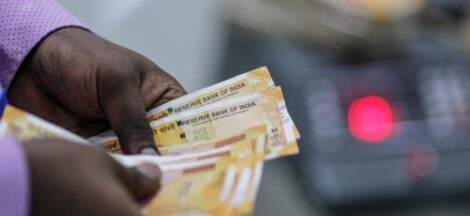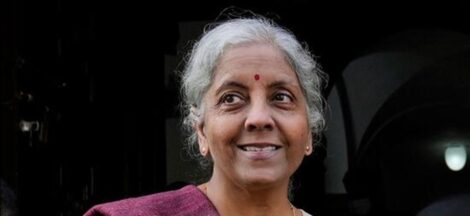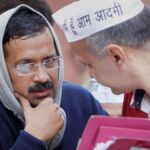NEW DELHI: A clutch of steps aimed at addressing the issue of income stagnation being faced by sections of the population and the persisting rural distress could be part of the short-term agenda of the new government, according to sources privy to the deliberations in the National Democratic Alliance (NDA).
Among the options before the government are a strengthening of the existing schemes, and new ones specifically targetted at the rural sector. Moderate tax reliefs are also under consideration as part of the plan to boost consumption demand, while keeping in mind the fiscal costs.
Consumption in rural areas remains tepid largely due to negative growth in real rural wage, high rural inflation, and shortfall in crop output due to below-normal monsoon. Data from the Centre for Monitoring Indian Economy (CMIE) showed that real rural wages contracted in 25 of the 27 months to February 2024, suggesting that the recovery in the hinterland could take longer than expected.
However, some sources said the government could refrain announcing any new large-scale handouts.
“The rural demand dip is seasonal and there’s no indication of stress. The government is not likely to resort to any big additional measures to boost rural demand,” said Sandeep Vempati, an economist associated with the Bharatiya Janata Party.
“Rural employment should be the focus of the new government. It has to take necessary steps to encourage private sector participation in rural industries and MSMEs to address rural distress,” said N R Bhanumurthy, Vice-Chancellor of Bengaluru’s BASE University.
“Perhaps there is a need to further reduce the tax rate at the lower income slabs to boost disposable income and consumption at a more broader scale,” EY India Tax & Regulatory Services Partner Sudhir Kapadia said. He, however, added that rather than reverting to the old system of myriad exemptions and deductions, the government should continue on the salutary path it has set towards a simpler tax system with minimal exemptions and deductions and moderate tax rates.
Referring to extra dividends from the RBI, Bhanumurthy said he was in favour of channelsing a portion of that to states for capex to boost economic activity across the country that will lead to demand for work.
The higher-than-expected dividend of Rs 2.11 trillion from the Reserve Bank of India (RBI) as against the budget estimate of Rs 80,000-90,000 crore could let the Centre reduce its market borrowings and fiscal deficit in FY25 or pump in more money into schemes and capex. The extra transfer by the RBI is almost 0.4% of GDP and may help the Centre bring down further to 4.8%-4.9% of GDP from the interim budget estimate of 5.1% for FY25 if additional spending is not undertaken.
According to Bhanumurthy, pumping more budgetary resources into the rural economy is is not the solution. He cited the electoral debacle of the defeat of the Jagan Mohan Reddy-led government in Andhra Pradesh even after spending Rs 2.35 trillion in various welfare schemes in the last five years.
At the Centre, as the BJP fell short of an outright majority, Modi 3.0 will need to rely more heavily on its coalition partners, passing contentious reforms could prove more difficult, particularly around land and labour, which have recently been flagged as priorities by the BJP to boost India’s manufacturing competitiveness.
Citing the latest RBI Annual Report, Vempati said the rainfall will be above normal this year. “This would prop up rural demand. Other drivers of rural demand would be the extension of PM Awas Yojana- Rural (PMAY-R), extension of PM Svanidhi to small towns and villages and free electricity to poor households under PM Surya Ghar Muft Bijli Yojana,” Vempati said. It must be noted that the majority of the rural population will be getting free ration under PM Garib Kalyan Anna Yojana until 2028, he said.
“Focus on being Atmanirbhar in pulses and edible oil, push to horticulture and crop diversification, providing credit to informal micro enterprises and fillip to exports including from rural areas will create sustainable rural demand,” Vempati added.
The Central government has schemes for all aspects of the rural economy. Some schemes are near saturation like in rural housing and rural roads while rural jobs guarantee programme (MGNREGA) is demand based. Besides free food grains under a public distribution system to 80 crore people, farmers are also getting nearly 80% subsidy in fertiliser and Rs 6,000/annum in income support.
A proposal for increasing farmers’ financial assistance under PM-KISAN by Rs 2,000-3,000 per farmer household from Rs 6,000 could also be back on the table also. The Centre currently spends around Rs 60,000 crore/annum under the scheme. Additional Rs 2,000-3,000 crore could increase the outgo by Rs 17,000-25,000 crore to 85 million beneficiaries.
“With the FY24 tax revenues exceeding the RE, the forecast included in the Interim Budget Estimates for FY25 is likely to be overshot. In addition, the higher-than-expected dividend transfer from the RBI would boost the overall revenue receipts. This should allow some fiscal space to absorb higher expenditure,” said Aditi Nayar, Icra chief economist.
A 5% tax is levied on income between Rs 3-6 lakh and 10% on income between Rs 6-9 lakh. Income between Rs 9-12 lakh and Rs 12-15 lakh is subject to 15% and 20% tax, respectively. A 30% tax would be applicable on income above Rs 15 lakh.
With taxpayers battling new health issues with every passing day, the government should consider increase deductions on medical related expenses, said Rahul Charkha, Partner at Economic Laws Practice. “It would only be judicious to provide an aggregate deduction for Mediclaim, life insurance premium and medical expenditure, with a cap of Rs 2.5 lakhs,” Charkha said. Currently, medical insurance/expenses up to Rs 80,000 is allowed as a deduction under Section 80D of the Income Tax Act.
Source: The Financial Express



 AAP scores zero in third straight LS election in Delhi
AAP scores zero in third straight LS election in Delhi 